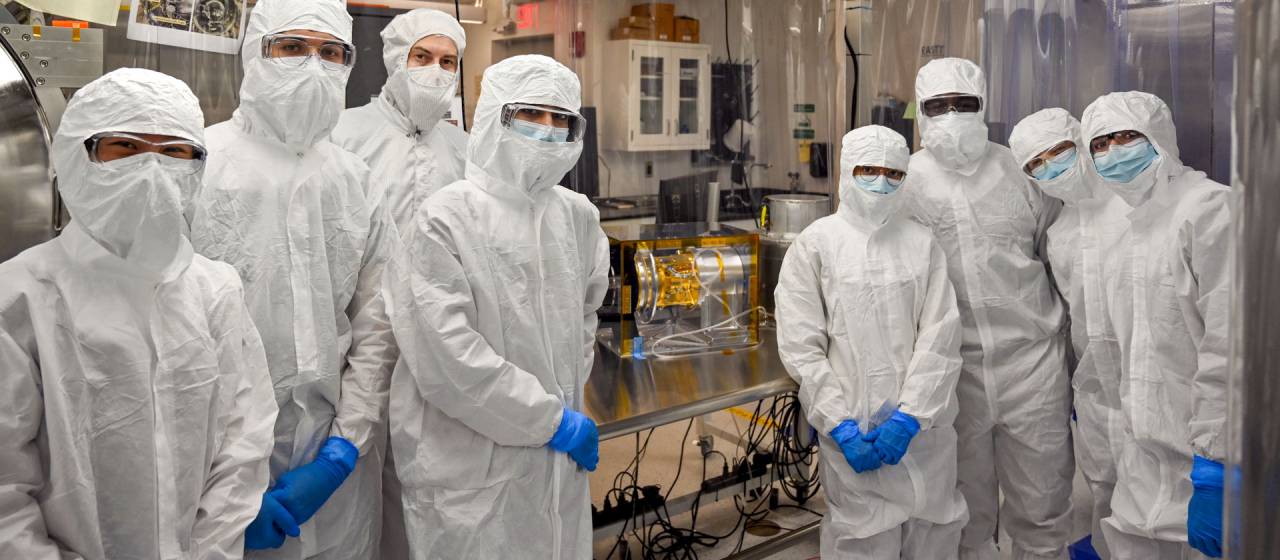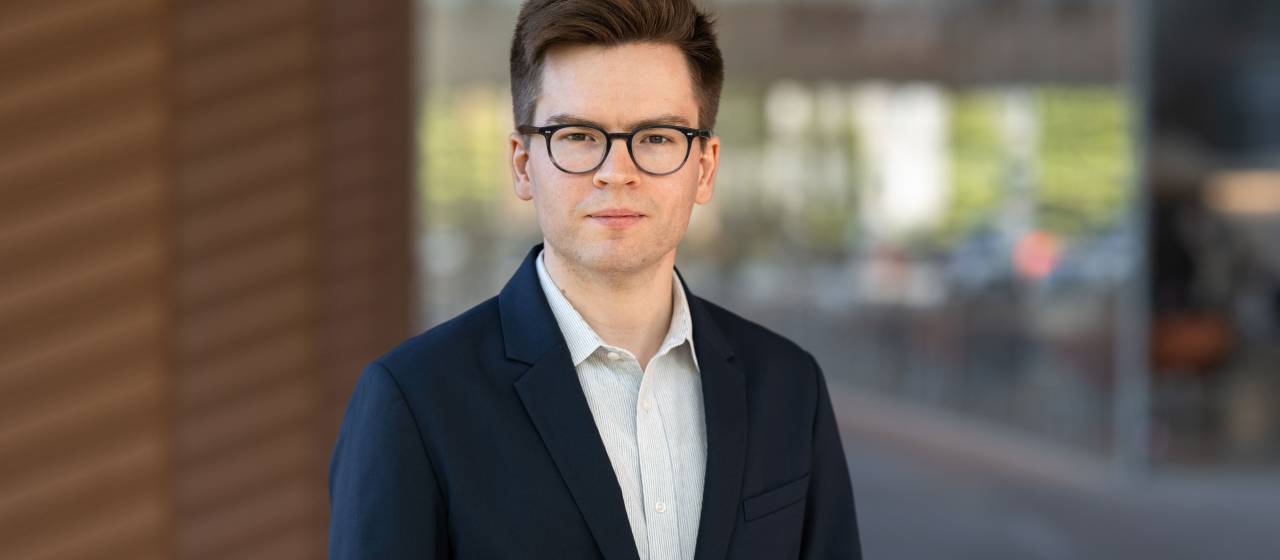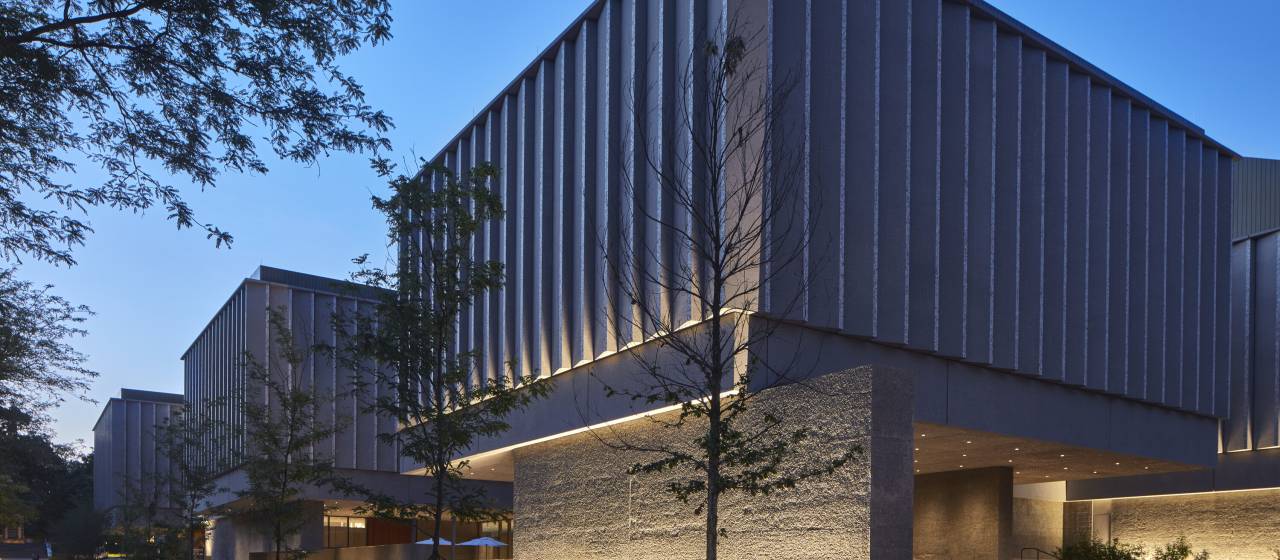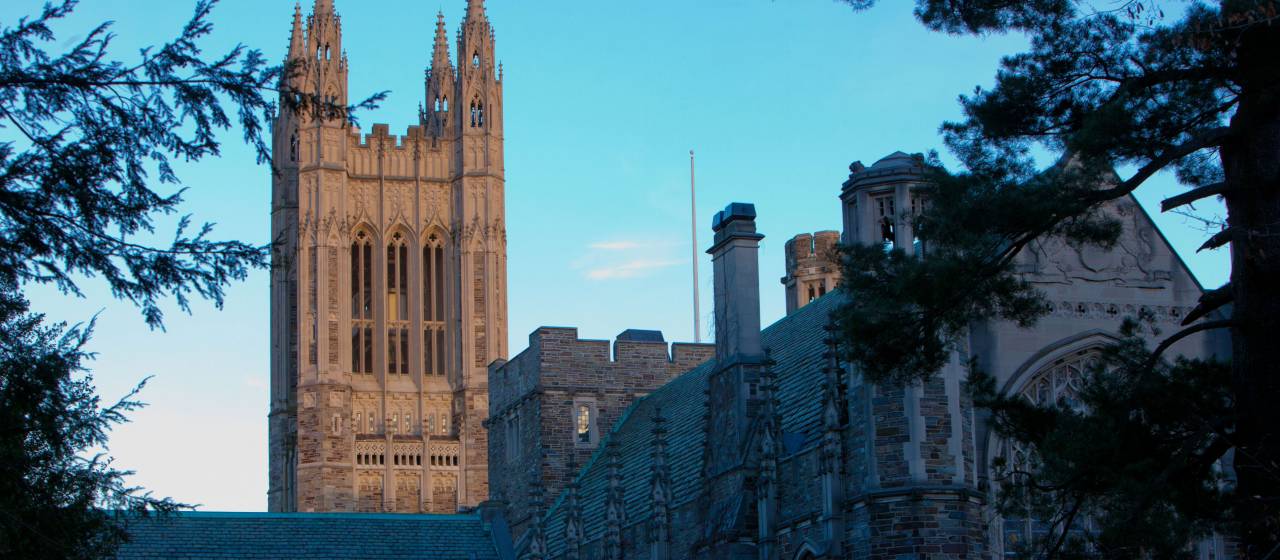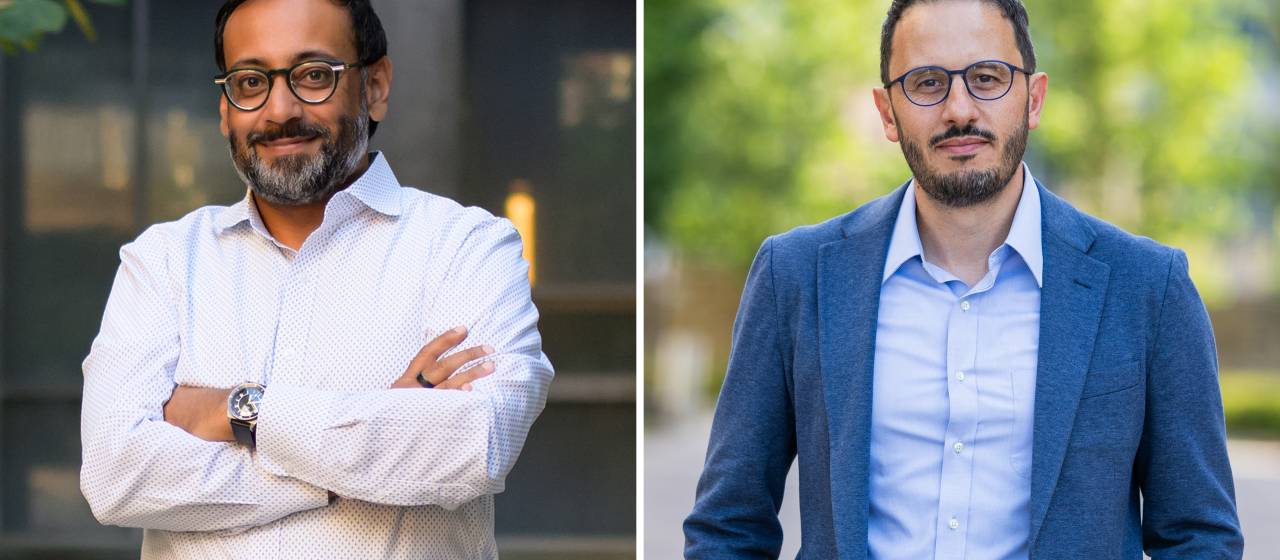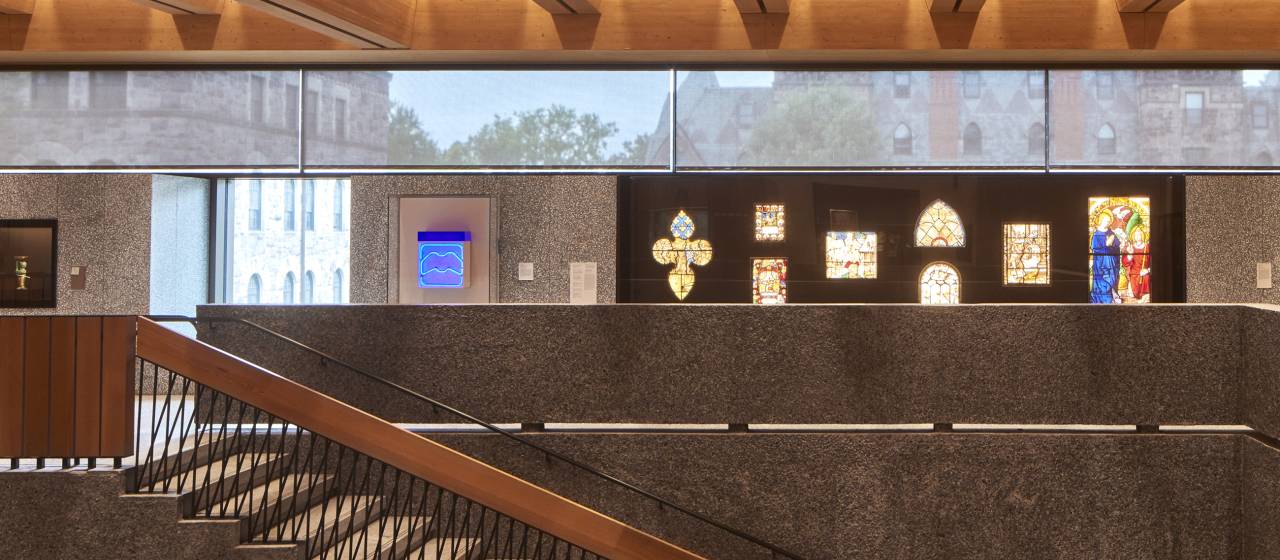NASA at Princeton: Hands-on lab trains students in teamwork, building space equipment
This September, IMAP — a one-ton NASA spacecraft carrying 10 unique instruments — will launch into space to collect and interpret particles from the Sun and from exploded stars billions of miles beyond the farthest planets in our solar system.
On board the Princeton-led mission will be a sophisticated space physics instrument, called SWAPI, which was meticulously built, tested and calibrated in a cleanroom on Princeton’s campus, housed in the basement of a former preschool.
Every year, students in Princeton’s Space Physics Laboratory course (AST 250/251) also “get their hands clean” in the confines of that cleanroom, designing and building sophisticated space physics instruments of their own — suiting up day after day in “bunny suits,” booties, hairnets, gloves and masks alongside the engineers and scientists building the NASA flight hardware.
“You are literally spending a year in a lab that’s also building a NASA satellite!” said William Li of the Class of 2027, who took the course his sophomore year. “My experience in this class directly contributed to me landing an internship at an aerospace company.”
Lead instructor David McComas is NASA’s principal investigator for all of IMAP, the Interstellar Mapping and Acceleration Probe, a collaboration between 82 U.S. partner institutions in 35 states.
Co-instructor Jamie Rankin, a Princeton research scholar in astrophysical sciences, is a co-investigator on IMAP and the instrument lead for SWAPI, named for the Solar Wind and Pickup Ions it detects.
“The Space Physics Lab class is a unique and very hands-on class,” said McComas, a Princeton professor of astrophysical sciences and affiliated faculty in mechanical and aerospace engineering. “It’s a remarkable thing to be able to offer here at Princeton, or anywhere.”
“We designed and built SWAPI right here at Princeton,” said Rankin. “We calibrated it here, and we’re sending it to space in just a couple months. As you might imagine, our students are super excited to get hands-on opportunities to work here.”
Although undergraduates do not directly touch the NASA flight hardware, some students assisted in the control room during calibrations and cross-calibrations for SWAPI and two other IMAP instruments.

A closeup of SWAPI, one of the instruments on the Interstellar Mapping and Acceleration Probe (IMAP).
The class has proved so hugely popular that McComas has resorted to extreme lengths to shrink the pool of class applicants down to the 10-12 students the lab and cleanroom can absorb.
“I’ve tried to make it as onerous as possible so that the most committed self-select,” he said. “We teach on Wednesday and Friday, from 8 to 10 in the morning.”
Rankin has co-taught for the past four years and will be the lead instructor while McComas is on sabbatical next year, focusing his attention on IMAP.
After reaching its designated position between the Earth and Sun, the IMAP satellite will orbit that point for at least three years, collecting and interpreting particles from the Sun and from exploded stars beyond our solar system. The mission has several goals, including monitoring space weather to help protect astronauts and satellites, as well as mapping the structure of the heliosphere — the cosmic shield that protects our solar system from dangerous galactic radiation.
“Build, test, iterate, test again”
The Space Physics group, a part of Princeton’s Department of Astrophysical Sciences, specializes in understanding the particles that stream out from the Sun at around 1 million miles per hour in a torrential flow known as the solar wind.
In the fall semester each year, students in the lab class learn the basics of heliophysics (another name for space physics) and develop their skills in the lab and cleanroom. In the spring, the students propose and carry out a group project of their own design.
This year, Li and the other students in the class chose to build an electron emitter that helped to calibrate the channel electron multipliers, a core piece of technology used in several instruments on IMAP, including SWAPI.
The students divided themselves up into teams — design, coding and machining — and got to work. As a rotating team of Space Physics group members kept a watchful eye but didn’t interfere, the students made design and engineering decisions that sometimes succeeded and sometimes didn’t.
“This is vital for these students, many of whom have never failed at anything in their lives before,” said McComas. “This is a very real-world oriented class. They build, test, iterate, test again. They have to go through the crucible of several crises to get to the end. It’s a great class. We routinely get comments that it was the best and hardest class that students took at Princeton.”
In lieu of a final exam, the students jointly deliver a critical design review (CDR) of their instrument and its data. CDR is a time-honored NASA make-or-break briefing, where the principal investigator and instrument leads must demonstrate that their equipment is on track to fulfill its design and meet mission objectives. IMAP went through its own CDR in January 2023.
“The students designed and fabricated an electron gun, down to machining many of the pieces in the campus machine shops,” said McComas. “They didn’t get it working until a few days before CDR, but they got it working, put their own filament in, shot electrons, got count rates, and did more data analysis in three days than I thought anybody could.”
Forging a team
At a Princeton Reunions panel discussion about space, McComas said that for NASA missions, “teamwork is the absolute key. You build the best team, of the right people, who want to work together for the same goals. They can be from lots of different institutions and lots of different countries, but you find people who are excellent individually and also really committed to being a team. Put them together, and magic happens.”
Princeton’s Space Physics Lab course gives students deep experience with building and becoming that kind of team, he said. “They’re learning how to work together, how leaders lead,” McComas said. “At Princeton, you can have more leaders than you need, which brings its own issues. They all pull in various directions for a while, but eventually they figure out how to work together.
“Most of these young people have never worked with other students on an open-ended project that they were jointly, completely, responsible for. They might have had a lab partner, but it’s not the same when they have to figure out their project, figure out how to divide the work, figure out what to do when somebody falls ill or doesn’t do their part. They are learning important life lessons here, absolutely.”

David McComas (left rear) and Jamie Rankin (right rear) listen as a student presents during the Space Physics Lab course, which starts in this classroom and quickly moves to the Space Physics cleanroom.
Latest Princeton News
- Michael Skinnider wins 2025 Packard Foundation Fellowship
- A ‘town square for the arts and humanities’: The new Princeton University Art Museum shares opening details
- The ‘Many Minds, Many Stripes’ conference celebrating Graduate School alumni is underway on campus
- Society of Fellows in the Liberal Arts welcomes new scholars
- Princeton alumni Nabarun Dasgupta '00 and Sébastien Philippe *18 win MacArthur 'genius' grants
- Venture Forward gifts name multiple spaces within the new Princeton University Art Museum



